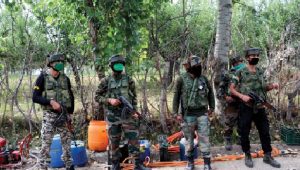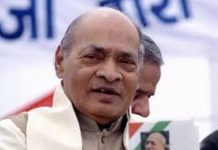 In a rare development of its kind, Army in Kashmir has confirmed that the three youth killed in an encounter at Amshipora in Shopian were three civilians from Rajouri in Jammu. The finding followed an internal probe into the incident.
In a rare development of its kind, Army in Kashmir has confirmed that the three youth killed in an encounter at Amshipora in Shopian were three civilians from Rajouri in Jammu. The finding followed an internal probe into the incident.
In a statement issued to the press, the Army said that “during the operation, powers vested under the AFSPA 1990 were exceeded,” and that “the dos and don’ts of Chief of Army Staff (COAS) as approved by the Hon’ble Supreme Court have been contravened” in the course of the operation.
“The inquiry has prima facie indicated that the three unidentified terrorists killed in Op Amshipora were Imtiyaz Ahmed, Abrar Ahmed and Mohd Ibrar, who hailed from Rajouri,” Army statement read.
Earlier on July 18, the Army had claimed to have killed three unidentified militants in an orchard at Amshipora. But once their pictures were published in newspapers and circulated on social media, three families in Rajpouri claimed they were their children and insisted they had had no terror links. According to the families, the trio had gone to Shopian to work as labourers.
This was also clear from the account of the family in Amshipora, whose outhouse the three youth had taken up on rent. And on the morning of July 18, they found them missing from their room and later on learnt they had been killed in an encounter and labelled as terrorists.
The Army was quick to order a high-level Court of Inquiry (CoI) into the encounter “Statements of key witnesses are being recorded and progress is being monitored closely,” an Army spokesman said at the time.
But nobody in Kashmir, even in their wildest imagination, believed that the Army would indict its own soldiers. This is why when it happened, it came as a pleasant surprise to people. But there are still doubts about the Army’s sincerity to take the probe to its logical conclusion. Army, on its part, is waiting for the DNA report and is also investigating the involvement of the slain youth in “terrorism or terrorism-related activities”.
The past record of the Army in such probes also doesn’t give much confidence. In 2015, in a first such decision of its nature during the ongoing turmoil, the army’s northern command endorsed the life imprisonment to its six army personnel, including a colonel-rank officer, by a General Court Martial in the infamous 2010 Machil fake encounter case.
Those convicted included the then Commanding Officer of the 4 Rajput regiment Col DK Pathania, Captain Upendra Singh, Havildar Devendra Kumar, Lance Naik Lakhmi, Lance Naik Arun Kumar and Rifleman Abbas Hussain Shah of Territorial Army.
The personnel were held guilty of luring three Kashmiri youth — Shehzad Ahmad, Riyaz Ahmad and Mohammad Shafi — to Kalaroos in Kupwara on the promise of job and money and later shooting them dead and dubbing them as the terrorists infiltrating from Pakistan.
The discovery later that the killings were fake had touched off a torrent of protests in Valley lasting five months. Around 120 youth — most of them teenagers — were killed in the unrest. For years, Machil encounter had become one among the major cases of the human rights violations in J&K, that symbolized everything that had gone wrong with the security management of erstwhile state beginning with early nineties massacres through Pathribal and Ganderbal fake encounters to the curbs on everyday life.
In encounter at Pathribal in South Kashmir in March 2000, five innocent Kashmiris were killed in cold blood and passed off as the terrorists blamed for the massacre of 36 Sikhs at Chittisinghpora. Though the CBI that probed the case termed Pathribal encounter as fake, Army subsequently gave itself clean chit. Would probe into Amshipora encounter set the record straight? It is difficult to say anything at this time. Much rides on how the probe unfolds in future and whether Army takes its erring personnel to task.
letters@tehelka.com












